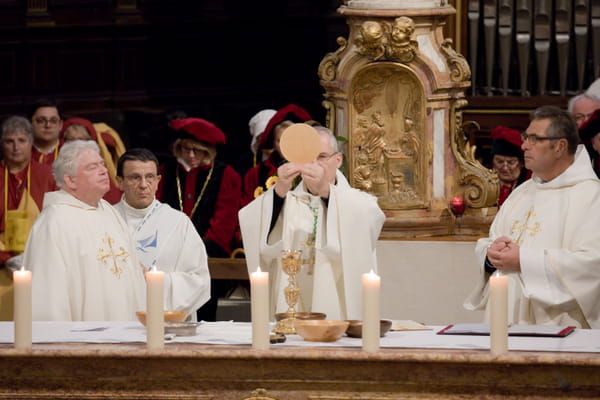The wine for the Mass is chosen with great care. Here are the characteristics of liturgical wine.
What does Mass wine look like? You may have already asked yourself the question, now we have the answer! And it might surprise you, especially concerning the quality of this beverage. If a priest can buy from any winemaker to choose his Mass wine, also called liturgical wine, in fact, certain technical characteristics are specific to Mass wine.
First of all, the wine in question must remain viable for at least two weeks after opening. But then, why such subtlety? Quite simply because a priest needs 5 centilitres of wine for his daily mass, no more, no less. This represents 35 centilitres of wine per week, or half a bottle. Two bottles are then necessary to cover two weeks of mass. This is why the wines drunk by the ecclesiastic are often sweet or sweet white wines. Natural sweet wines are also among the most suitable for mass. In addition, since mass is celebrated in the morning, it is much more pleasant to enjoy sweet notes rather than a dry wine or one with overly pronounced tannins.

Please note, however, that mass wine must be exclusively made from the fruit of the vine and contain as few additives as possible, such as sulfites. We can talk about “natural wine” which does not contain any additives. In fact, it is impossible to verify that all mass wines benefit from this label. In addition, nothing obliges a priest to choose a natural wine to celebrate his mass. A wine can also be judged “natural” differently from one priest to another. This is why it is not uncommon to find wines containing pesticides, as long as the latter is made from grapes. The only sine qua non condition for a liturgical wine.
Finally, while the quality and style of wine remain closely scrutinized, liturgical or “mass” wine does not benefit from any label, or even legal recognition. These “appellations” are in reality associated with a vintage name. This is why any producer has the possibility of producing and marketing a “mass wine”, without it having any particular properties. He is simply required to mention its origin, as for any bottle produced in France. But then, what is the color of this famous mass wine? Red would you tend to answer in reference to the blood of Christ. Not at all! The priest celebrating the mass in white, the wine is also white to avoid stains, if wine were to be spilled, being too visible. It’s as simple as that.
